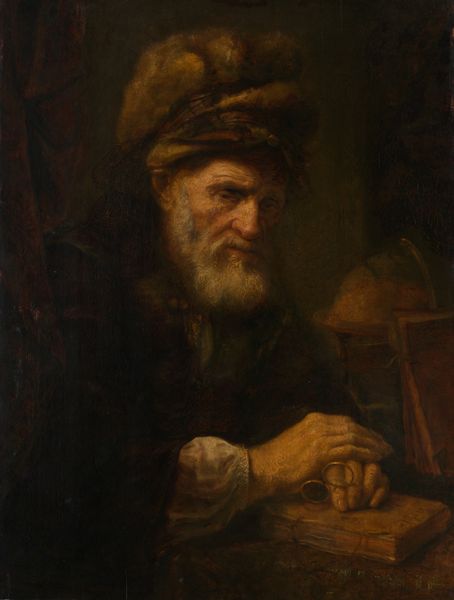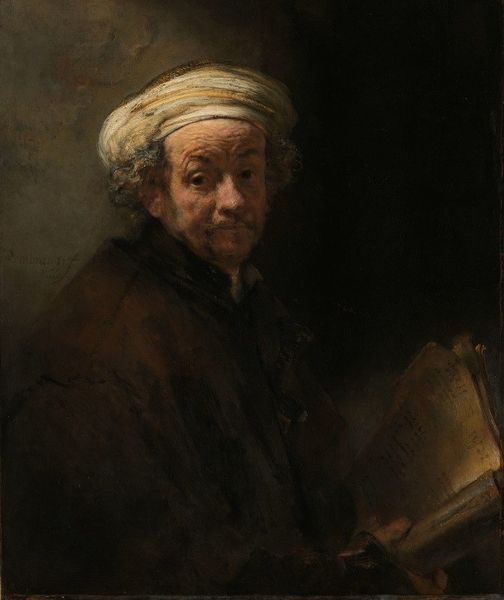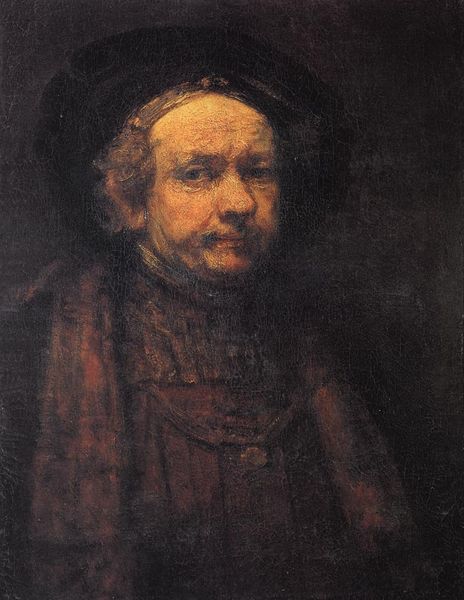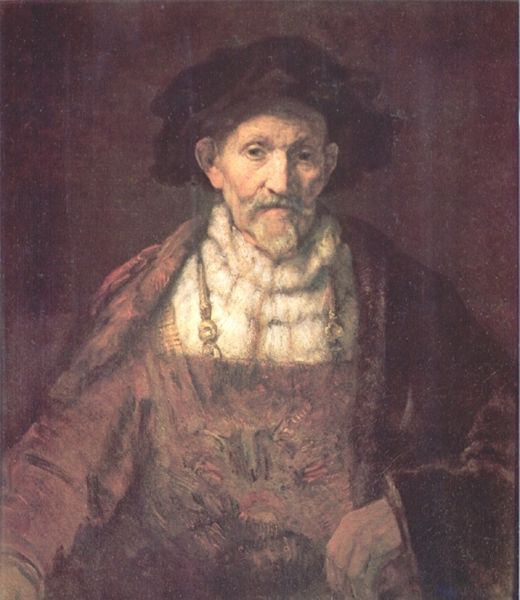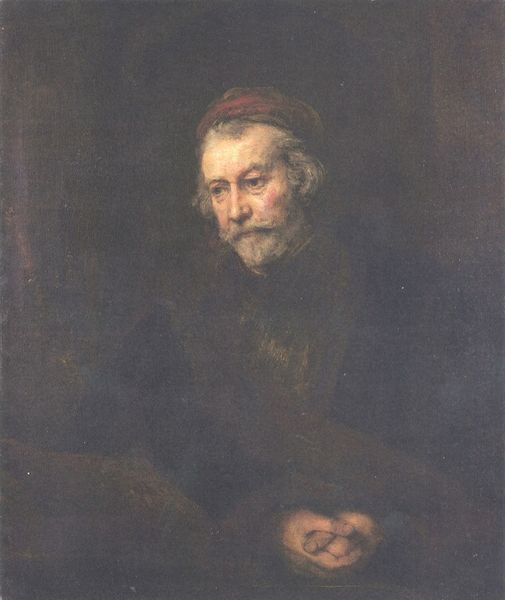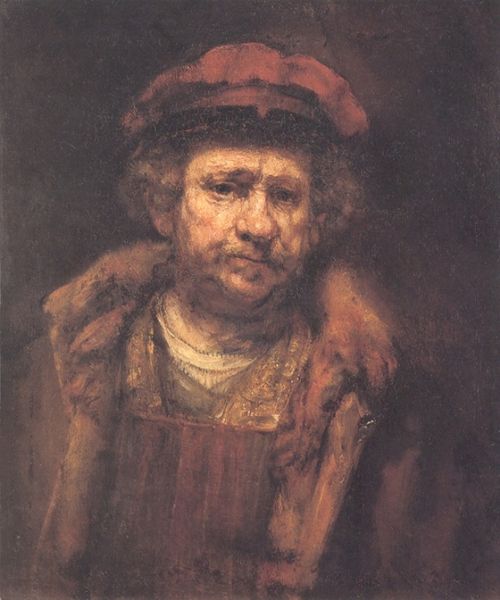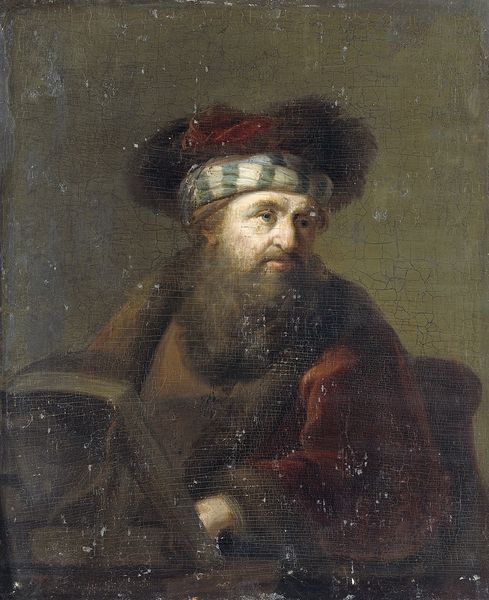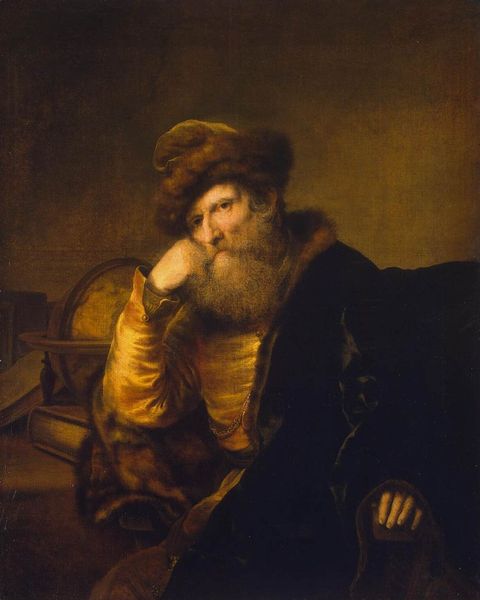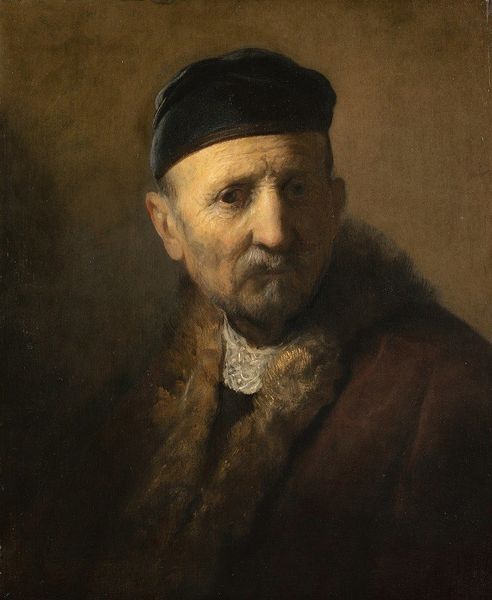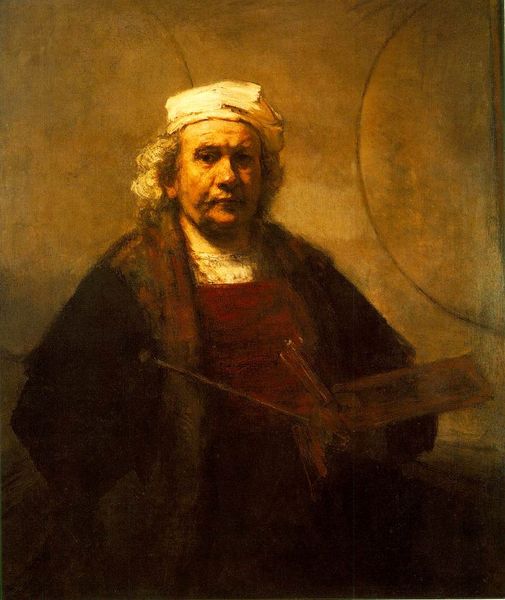
painting, oil-paint
#
portrait
#
figurative
#
baroque
#
dutch-golden-age
#
painting
#
oil-paint
#
figuration
#
history-painting
#
realism
Copyright: Public Domain: Artvee
Curator: Standing before us is Rembrandt van Rijn’s “Portrait of an Old Man,” painted around 1655 using oil on canvas. The portrait shows a man with weary eyes, holding a walking stick and wearing a heavy robe and wide-brimmed hat. Editor: I'm immediately drawn to the profound sense of dignity despite what seems to be a life marked by hardship etched onto his face. There’s something intensely humane and perhaps slightly melancholic about his presence, the weight of the world, you know? Curator: Indeed, and Rembrandt excels in capturing this. We have to consider the societal implications as well. This image resonates with the Dutch Golden Age’s appreciation for individualism, reflecting their increasing emphasis on personal achievement and merit over aristocratic privilege. Portraiture at this time was a key way for people, especially from non-noble backgrounds, to establish their status. Editor: Right! And you can tell. Look at the brushwork! Thick, impasto layers bring such depth, particularly to the face. You almost feel you could reach out and touch his wrinkles, his skin! There is this profound texture and character to the piece. The lighting, dramatic and focused, throws his face into sharp relief. And notice that stick? To me it feels not just functional, but symbolic. Like he's literally leaning on something tangible for support. A very tangible mortality, I think! Curator: The theatrical use of light—what's known as chiaroscuro—contributes to the drama, emphasizing the sitter's emotional and psychological complexity, mirroring how Rembrandt explored interiority as much as appearance. The clothing helps solidify his persona; it indicates perhaps not a man of enormous wealth, but certainly one with stature and some gravitas within the community. Editor: To see that kind of humanity staring back at you from centuries ago is kind of a miracle. One begins to wonder who he was, you know, what dreams did he chase? And perhaps the greater questions of where he stands with eternity! Curator: It serves as a reminder of both our shared humanity and our own temporality, which, I suppose, explains why Rembrandt's work continues to captivate and challenge viewers centuries later. Editor: Absolutely. He speaks to something fundamental in the human experience and shows us, beautifully, our resilience.


